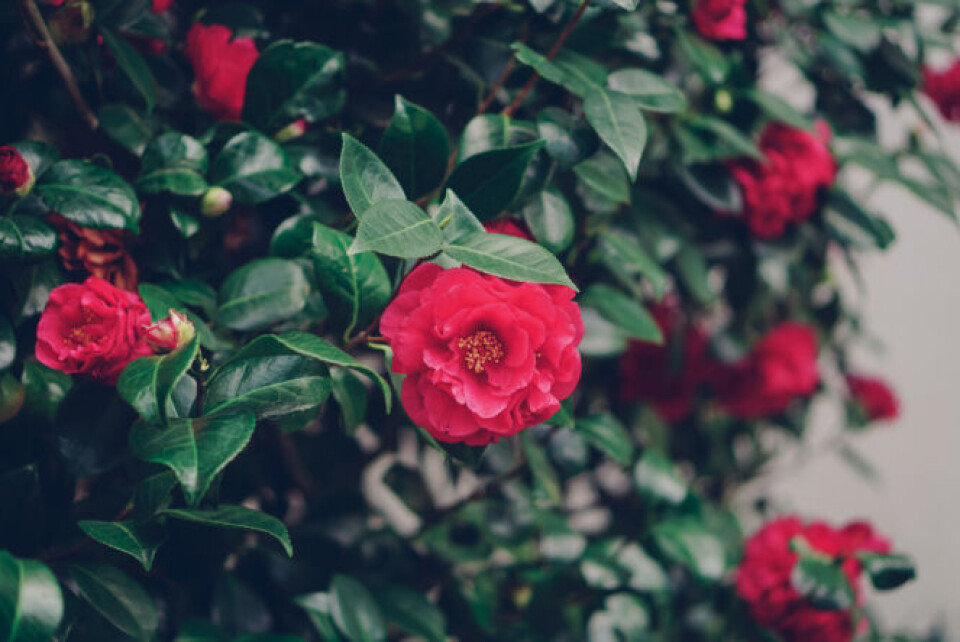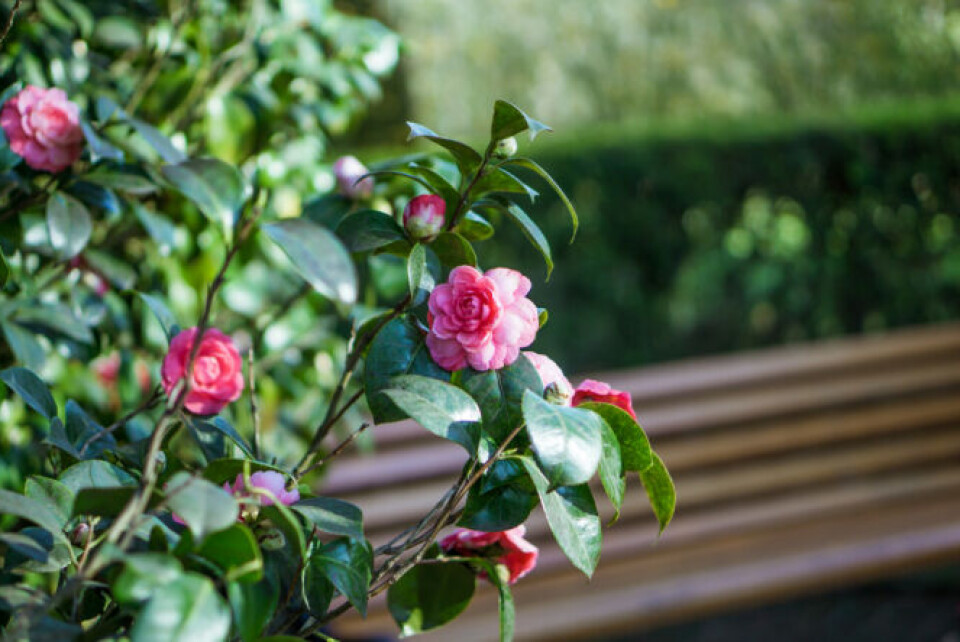-
What you should do to your garden in France in spring
Weeding, pruning, sowing, preparing the lawn…here is how to welcome sunnier days
-
Mimosa is pretty…but ‘posing threat to biodiversity’ in south of France
The flowers are prized in the region, but not everyone is thrilled to see their spread
-
Gardening in France: how to overcome daffodil dilemmas
Expert solutions for daffodil 'blindness' and 'lively' composting techniques to try
Winter flowers: The ‘extraordinary’ history of France’s camellias
The story of how these evergreen shrubs arrived in Europe is as colourful and fascinating and the flowers themselves

Camellias are the stars of winter, giving colour through the dark days when very little else is in flower.
The Jardin des Plantes at Nantes has one of the most important national collections in France, with 1,200 plants and 600 different cultivars – all of which can be visited by the public for free. February and March are the best months, when most are in flower.
Nicolas Le Mouël, gardener responsible for the camellia collection, says they are a fascinating plant, with an extraordinary history:
“They originally came from Asia and we think they arrived in Portugal in the 16th century. The first recorded ones in England and France arrived in the 18th century. Camellia is a large genus of plants, including over 260 species, which includes tea, Camellia sinensis.
“The story goes that the English asked the Chinese to send them tea plant seeds, but whether by error or by design to protect their precious tea crops, the seeds that were sent were another variety, Camellia japonica, which produces such beautiful flowers, they soon became very popular. From early on gardeners began to create new varieties, and there are now more than twenty thousand ornamental cultivar, obtained mostly from Camellia japonica.”
The camellia was introduced in Nantes in 1806, by Ferdinand Abraham Favre, who was later mayor, and encouraged the town to have them in its parks.
In that period, gardeners thought this exotic plant should be grown under glass, but Mr Favre decided to experiment by growing them outside, and was one of the first to do so. It was such a success, and he was so captivated by their flowers, he eventually had around 7,000 plants in the grounds of his house on the banks of the River Loire:
“The plant world can be grateful to Mr Favre for showing us that the camellia can be an outdoor plant in Europe,” says Nicolas Le Mouël.
Read more: Gardening in France: The history of Toulouse’s Parma violets
Plant nurseries quickly followed Mr Favre’s example. In 1851, the Nantes Horticulture Society calculated there were 250,000 camellia in the town and a production of 60,000 plants a year. They became very fashionable in Parisian high society. Early in the morning the blooms were picked and put on the train for the capital where they were worn by women as a corsage and in buttonholes by men.
New varieties were developed and by 1833 there were more than 57 in the town. Two local varieties are Gloire de Nantes and Ville de Nantes. The latter is recognisable by its large flowers which are red with white spots and serrated petals:
“It is well-known everywhere,” says Mr Le Mouël, “even in Japan and China where it is grown, so new versions of the original have travelled back to where they came from.”
He says the cultivars differ by their colours which can range from red to white, with oranges, pinks and darker colours with violet overtones, and some have spots and stripes. The form of the flower can vary from single to double and multi-layered, sometimes irregular in form and sometimes geometric and neat in appearance.
“There are those which are lush like a peony and others more like an anemone.

Though most flower in February and March, the season lasts up to seven months in total, with the first autumn camellia coming into bloom in October.
“The ultimate dream for researchers is to produce a yellow flower, a golden camellia. They also want to produce a beautifully scented one, as camellias do not have much smell, and one which can resist more extreme temperatures, so it can be grown more widely throughout France.”
Read more: Mimosas blossom in south of France as season begins
At Nantes, Mr Le Mouël says he is more interested now in introducing examples of the different species rather than more new varieties: “We are a botanic garden, so this approach makes sense, going back to the origins of the plant. We already have fifteen, which is not bad.”
He does, though, look out for new varieties which are produced naturally:
“Every year, new seedlings grow up in the beds, and I grow them on in the nursery. It is possible that wind or insect pollination could create a new camellia. We call them semis de la chance, lucky seedlings. I have not found one yet, but will keep on looking.”
Sometimes, he says, cross breeding produces unusual results: “We have one Betty Foy Sanders variety, which has developed to produce three different coloured flowers, some are red, some white and some red and white.”
Camellias are an easy plant to grow as long as they have an acid soil and a mild and humid climate. Mr Le Mouël says they are resistant to disease and very forgiving. “There is one rule for pruning, which must be done, if at all, after flowering. Then the best approach is to allow light into the shrub to encourage next year’s flowers. If you get it wrong, and cut back too much, it will grow back.

“You can leave them to grow freely if you have the space. They can grow as high as 7m with a 9m circumference, or you can cut them back every year and even produce a bonsai sized plant.
“In the Jardin des Plantes, where we have the National Collection of camellias, they have to be pruned so they remain separate and can be individually identified. It is a big job, pruning 1,200 shrubs. I am also responsible for camellias in some of our other parks in Nantes and there we do not prune them. They can last for many years. We have some that are between 100 and 150 years old.”
It is free to visit Nantes public gardens. For opening hours and details, visit jardins.nantes.fr
Related stories:
Shade and chic: France’s history of planting trees in a row
This historic Lyon garden is a winter gem
Mediterranean garden in south of France is a winter paradise
























